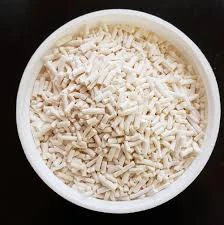
Understanding Sodium Levels in Monosodium Glutamate and Their Impact on Health
Understanding Monosodium Glutamate (MSG) and Its Sodium Content
Monosodium glutamate, commonly abbreviated as MSG, is a flavor enhancer that has been widely used in cooking, particularly in Asian cuisines and processed foods. Known for its savory umami taste, MSG has sparked considerable interest and debate regarding its health effects and its sodium content.
Understanding Monosodium Glutamate (MSG) and Its Sodium Content
When considering MSG, it is essential to understand its sodium content. A typical serving of MSG contains about 12% sodium based on its weight. This means that, although MSG is used in smaller quantities compared to regular table salt, it still adds a significant amount of sodium to the diet. For instance, one teaspoon of MSG contains approximately 0.5 grams of sodium, while one teaspoon of table salt contains about 2.3 grams of sodium. Therefore, while MSG can be a lower-sodium alternative to salt in certain applications, its sodium content is not negligible, especially in large quantities or in combination with other sodium-containing ingredients.
monosodium glutamate sodium content

The relationship between MSG consumption and health has been a topic of much research and public concern. Some individuals claim to experience symptoms such as headaches, nausea, or a burning sensation after consuming foods with MSG, a phenomenon often referred to as Chinese Restaurant Syndrome. However, numerous scientific studies have not found conclusive evidence linking MSG to these adverse health effects at normal consumption levels. The U.S. Food and Drug Administration (FDA) recognizes MSG as generally safe when consumed within typical dietary amounts.
Despite the lack of definitive evidence regarding adverse effects, health-conscious consumers often seek to reduce their sodium intake for various reasons, including hypertension and cardiovascular health. Since MSG contains sodium, individuals aiming to lower their sodium intake may need to be cautious about their consumption of MSG. This is particularly important for those who are already monitoring their sodium levels due to existing health conditions.
Interestingly, MSG’s role in reducing overall sodium content in foods has gained attention. By enhancing flavor, MSG can allow manufacturers to reduce the amount of traditional salt used without sacrificing taste. This characteristic could be beneficial in developing lower-sodium food options, making it easier for consumers to enjoy flavorful meals while adhering to dietary restrictions.
In conclusion, monosodium glutamate is a popular ingredient that enhances the savory quality of foods while contributing sodium to the diet. Its unique flavor profile makes it an appealing option for many chefs and food manufacturers. However, while MSG could aid in reducing overall sodium levels in some food products, being mindful of its sodium content is crucial for those on restricted diets. As with any food additive, moderation is key, and consumers should stay informed about their dietary intake to make healthier food choices. Understanding the role of MSG in cuisine helps clarify its benefits and potential concerns, allowing everyone to enjoy their favorite flavors responsibly.
-
Why Glacial Acetic Acid Food Grade Is Essential in FlavorNewsMay.26,2025
-
Surging Export Growth of Food Additives in ChinaNewsMay.26,2025
-
How Ammonium Nitrate Fertilizer Boosts Crop YieldsNewsMay.26,2025
-
How 1,2,3-Benzotriazole Shields Plastics from UV DegradationNewsMay.26,2025
-
Cyanide in Gold Mining: Protecting People and the PlanetNewsMay.26,2025
-
Aluminum Hydroxide in Modern Sunscreen FormulationsNewsMay.26,2025
-
Understanding Synthetic Rubber OptionsNewsApr.27,2025
Hebei Tenger Chemical Technology Co., Ltd. focuses on the chemical industry and is committed to the export service of chemical raw materials.
-

view more DiethanolisopropanolamineIn the ever-growing field of chemical solutions, diethanolisopropanolamine (DEIPA) stands out as a versatile and important compound. Due to its unique chemical structure and properties, DEIPA is of interest to various industries including construction, personal care, and agriculture. -

view more TriisopropanolamineTriisopropanolamine (TIPA) alkanol amine substance, is a kind of alcohol amine compound with amino and alcohol hydroxyl, and because of its molecules contains both amino and hydroxyl. -

view more Tetramethyl Thiuram DisulfideTetramethyl thiuram disulfide, also known as TMTD, is a white to light-yellow powder with a distinct sulfur-like odor. It is soluble in organic solvents such as benzene, acetone, and ethyl acetate, making it highly versatile for use in different formulations. TMTD is known for its excellent vulcanization acceleration properties, which makes it a key ingredient in the production of rubber products. Additionally, it acts as an effective fungicide and bactericide, making it valuable in agricultural applications. Its high purity and stability ensure consistent performance, making it a preferred choice for manufacturers across various industries.











